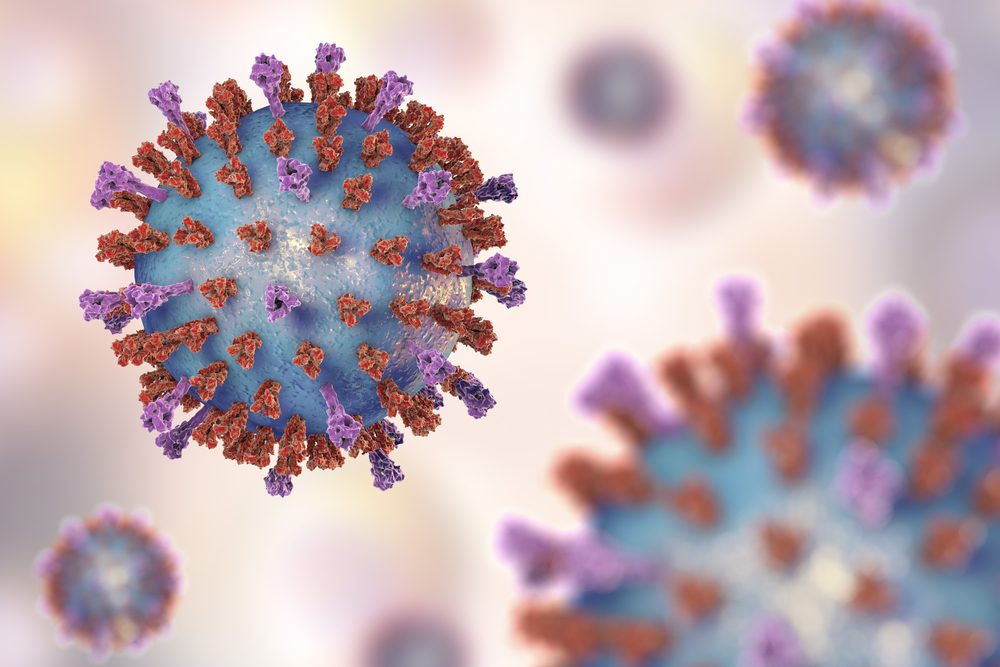Hypercortisolism May Affect COVID-19 Severity in Cushing’s Patients
Written by |

Clinical outcomes of COVID-19 in people with Cushing’s syndrome seem to depend on the severity of hypercortisolism, or how high blood cortisol levels are in these patients, according to a recent case series study.
“Severe hypercortisolism is a warning sign that [Cushing’s syndrome] affected by COVID-19 could require emergency care despite a lack of clinical presentations and low inflammation biomarkers,” the investigators wrote.
The study, “Clinical course and outcome of patients with ACTH-dependent Cushing’s syndrome infected with novel coronavirus disease-19 (COVID-19): case presentations,” was published in the journal Endocrine.
Some people with COVID-19 develop severe symptoms, which are thought to result from an increased release of inflammatory cytokines (molecules that mediate immune and inflammatory responses). COVID-19-associated hyperinflammatory syndrome (cHIS) is characterized by a fever of at least 100.4 F (38 C ), immune system dysfunction, problems with the liver, and increased cytokine production.
Excessively high levels of the hormone cortisol characterize Cushing’s syndrome. In most cases, these levels are due to the excessive release of adrenocorticotropic hormone (ACTH) — either by a tumor in the brain’s pituitary gland or adrenal glands, which sit atop the kidneys.
Chronic hypercortisolism can affect the body’s immune response, potentially rendering Cushing’s patients more vulnerable to infections, including severe COVID-19.
This case series described the clinical outcomes of Cushing’s patients at a medical center in Moscow. Of the 22 patients with active Cushing’s referred to this clinic between March 31 and May 15, 2020, three contracted COVID-19.
The first patient was a 71-year-old woman with a history of type 2 diabetes, who was admitted to the clinic in April with elevated levels of cortisol (1,750; normal: 133–537 nanomoles per liter (nmol/L)) and potassium (1.75; normal: 3.5–5.0 millimoles per liter (mmol/L)).
As her overall health condition continued to worsen, she was placed in the intensive care unit to be prepared for a bilateral adrenalectomy, a surgery in which both adrenal glands are removed.
After 13 days in the hospital, her condition worsen again due to shortness of breath. At this point, the patient was diagnosed with COVID-19.
A chest computed tomography (CT) scan revealed shadows with a ground-glass appearance and fluid around the heart and lungs. Lab tests detected some blood abnormalities that are also signs of cHIS, including elevated levels of ferritin and lactate dehydrogenase, as well as anemia and low platelet counts.
She developed acute respiratory distress syndrome and pneumonia affecting 80% of her lung tissue. The woman went into cardiac arrest and died seven days after the COVID diagnosis.
The second patient was a 38-year-old woman with obesity, mild high blood pressure and a five-year history of active Cushing’s disease for which she had undergone brain surgery twice. She declined treatment for hypercortisolism due to medication intolerance for those five years.
She was hospitalized in April with difficulty breathing, cough, fever, and chest pain, and was diagnosed with COVID-19. A chest CT scan showed ground-glass shadows in both lungs.
Oxygen therapy was given, along with antibiotics and paracetamol, and her symptoms improved significantly. The woman was discharged from the hospital 24 days later, after twice testing negative for SARS‐CoV‐2 infection, the virus that causes COVID-19.
A chest CT scan performed three weeks after her discharge supported the likelihood of a full recovery with only mild lung tissue scarring.
The third patient was a 66-year-old woman with a four-year history of mild Cushing’s disease and slightly elevated cortisol levels, despite undergoing an adenomectomy (surgical removal of an adenoma, or tumor in the pituitary gland) at age 62.
In addition to Cushing’s, the patient had a long history of type 2 diabetes, high blood pressure, and heart disease.
She tested positive for COVID-19 during a routine screening in May. A chest CT scan found signs of pneumonia affecting 4% of lung tissue. Upon hospital admission, her vital signs were normal and she showed no COVID-19 symptoms. She continued her normal treatment for diabetes and high blood pressure, and fully recovered after 10 days.
“In summary, this clinical case series gives a first insight into the clinical and laboratory presentations of patients with ACTH-dependent [Cushing’s syndrome] and confirmed COVID-19 infection,” researchers wrote, adding their observations suggest “the clinical course of COVID-19 is dependent on the severity of … hypercortisolism.”





